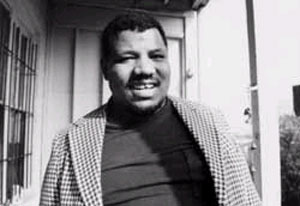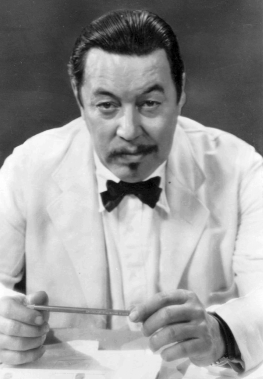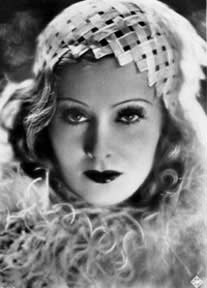
Edward Theodore Gein was a shy child, shunned by peers who thought him effeminate. His mother Augusta was a religious fanatic who thought the world full of immoral, corrupting influences and dragged her family to a remote farm on the outskirts of Plainfield, Wisconsin, the better to keep that corrupting world away from her children. She held her husband in contempt and he died of a heart attack in 1940. When her older son Henry began to turn away from his mother and towards the outside world, he too died in 1944 during a fire on the Gein farm. Henry went missing during the fire and Ed brought the search party straight to Henry's body, which had no burns but plenty of bruises on the head. But no one suspected shy Ed Gein.
Augusta was felled by a series of strokes and died in 1945. And Ed was alone.
Ed boarded off most of the house, including the entire second floor, as a shrine to his mother. He began digging up the graves of dozens of women, collecting body parts and wearing their skin. He later insisted he never had sex with any of the bodies because "they smelled too bad".
Then the disappearances started:
In 1947, 8 year old Georgia Weckler disappeared coming home from school in Fort Atkinson. Hundreds searched but never found her.
In 1952, two deer hunters, Victor Travis and Ray Burgess, disappeared after drinking at a Plainfield bar.
In 1953, 15 year old babysitter disappeared in La Crosse. There were signs of a bloody struggle. Thousands of searchers and reporters from around the country descended on La Crosse, but no trace of her was found besides bloody clothing.
In 1954, Plainfield bar owner Mary Hogan disappeared. A blood trail lead from her bar into the parking lot.
A decade of kidnappings and grave robbings, and for some reason, no one thought of the weirdo who lived alone in a remote farmhouse with a collection of "shrunken heads" he claimed were sent from the Philippines by a cousin. Instead, to the folks in Plainfield, he was the harmless old handyman and babysitter.
Until 1957, when store owner Bernice Worden disappeared. The cash register was missing and there was blood on the floor. But her son Frank was a deputy sheriff, and he remembered that Ed had been by the store the previous day asking about antifreeze. So when he discovered that one of the only two transactions that day was for antifreeze, Ed was the logical suspect.
When the deputies arrived at the Gein farm, they found a charnel house. Collections of skulls and organs and body parts, clothing and household accessories made out of body parts including a lampshade made from a face, and the heads of Mary Hogan and Bernice Worden. Worden's headless body was hung upside down in a shed, dressed out like you would a dead deer.
And so, knowledge of Ed Gein was unleashed upon a word which preferred to pretend such things didn't exist. Sure, there were natural disasters and wars and the Holocaust, but one guy gutting people and making himself into a woman with their body parts? That's a level of homicidal strangeness that people were unprepared for. Ed Gein was a sort of pioneer in his field, inspiring
Psycho,
The Texas Chainsaw Massacre, and
Silence of the Lambs and paving the way for today's current fascination with serial killers. But with only two confirmed kills under his belt (Hogan and Worden), he doesn't fit the technical definition of a serial killer. His mingling of body parts of living and dead folks in a time before DNA meant that the other disappearances could not be definitively attributed to him, and some of them differ enough from his proclivities and modus operandi that they may be the work of some other unknown murderer, rapist, or pedophile.
Media obsession, even without the help of Nancy Grace, and the public's fascination with Gein were intense. His possessions were to be auctioned off, though some unknown arsonist or arsonists burned down the house before it could become a "museum for the morbid". Gein's 1949 Ford sedan survived the fire to become a carnival attraction.
Gein himself spent the rest of his life in mental institutions. Other than his tendency to creepily stare at female staff members, he was a model patient. Gein thrived in the structured life of a mental hospital. He never needed drugs or tranquilizers and developed a number of hobbies, including ham radio.
Gein died on July 26, 1984 at the Mendota Mental Health Institute in Madison, Wisconsin after a long bout with cancer. He was buried next to his mother in Plainfield. For years, his grave was vandalized by souvenir hunters until the gravestone was stolen in 2000. It was found in the possession of a rock promoter and recovered by Seattle police. It is now in a museum. In 2006 the owner of what was once the Gein farm offered it for sale on eBay for $250,000, but the auction site pulled the listing.
 The New York Times reports that the last man killed in the city on September 11, 2001 was Henryk Siwiak, an undocumented immigrant from Poland who was city's only homicide unrelated to the terrorist attacks. He had arrived in the US the previous October to look for work, leaving his family behind in Poland. A few days after his 20th wedding anniversary, he found a job mopping floors at night in a supermarket. September 11 was to have been his first day at work.
The New York Times reports that the last man killed in the city on September 11, 2001 was Henryk Siwiak, an undocumented immigrant from Poland who was city's only homicide unrelated to the terrorist attacks. He had arrived in the US the previous October to look for work, leaving his family behind in Poland. A few days after his 20th wedding anniversary, he found a job mopping floors at night in a supermarket. September 11 was to have been his first day at work. 




